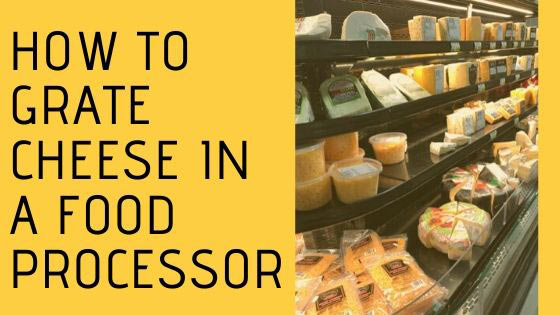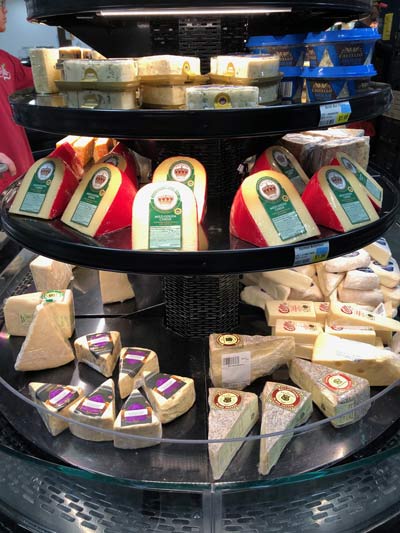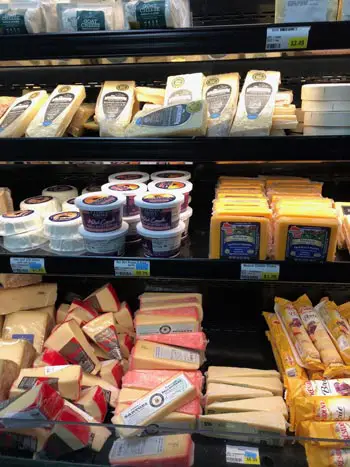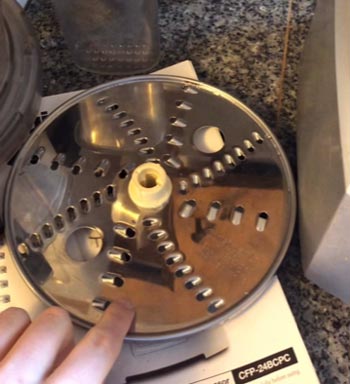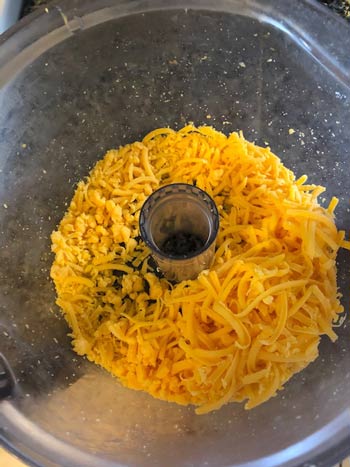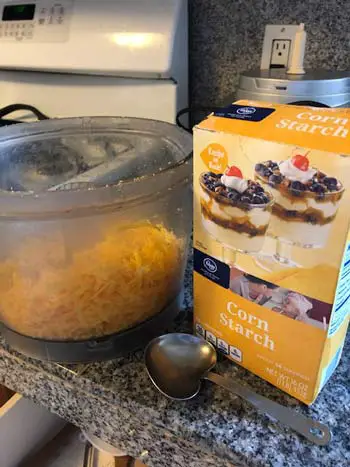Food processors are such multi-purpose kitchen tools. One of my favorite features of my own Cuisinart food processor? It came with a shredding disc specifically for grating cheese!
No more buying bags of pre-shredded cheese from the grocery store. Now, you too can save a little money and eat a little healthier. I’ll cover exactly how to use a food processor to shred your own cheese at home.
What do I mean by a little healthier?
Let me explain. When you purchase already shredded cheese from the store, the ingredient list is a little longer than simply “cheese.” To extend the life of the product companies add preservatives. Sometimes they add artificial colors, sugar, salt, or vegetable oil as well. And to prevent the cheese from sticking together once shredded? They add an ingredient that may surprise you.
Here’s the deal…
What is the difference between real cheese and processed cheese?
Well, real cheese is processed cheese. Meaning that cheese-making itself is a process. However, there are large differences between what we think of as natural cheese and what the Food and Drug Administration (FDA) labels a processed cheese.
To put it simply, real cheese is made of natural ingredients. Milk, salt, and sometimes some natural colors. Real cheese does not contain whey, because it is removed in the cheesemaking process. Real cheese is most frequently sold in block form.
Processed cheese is a cheese product. Meaning it can be made from one single cheese or a blend of several kinds of cheese. These cheeses may be solid or powdered and usually, they still contain whey. Fats, oils, salts, spices, and even artificial colors are often added to pasteurized process cheese. Then they add an emulsifier (a substance that stabilizes an emulsion) to stabilize the cheese product while it is heated and then poured into a mold. Processed cheese is sold in slices, blocks, and spray cans.
Does shredded cheese have wood in it?
As weird as it sounds—yes, there might be wood in your pre-packaged shredded cheese!
Have you ever wondered “What is the white stuff on my shredded cheese?”
Check out the back of a package of shredded cheese and you’ll see an ingredient called “cellulose.” Cellulose often comes from wood pulp and its purpose in your bag of cheese is to keep it from sticking together. It doesn’t always come from wood though, cellulose can be made from any non-digestible plant fiber.
So, is cellulose in cheese bad for you?
Not necessarily. It’s non-toxic so it’s legal to put in foods and so far there are no known harmful side effects.
So, is it better to grate your own cheese? I vote yes.
It’s best for your health to avoid eating much overly-processed food, so in this regard, block cheese is better for you than (pre) shredded cheese.
Now if you’d prefer to skip out on potentially eating sawdust too, it’s time to get friendlier with your food processor! If you do the final process yourself at home—the shredding—you can skip out on the last round of food additives.
Ready, Set, Shred!
Here’s a quick video tutorial for how to shred cheese in your food processor. I prefer grating cheese in a Cuisinart food processor, but you can use a Kitchenaid, a Hamilton Beach, a Black & Decker, or even a Ninja blender (though in that case, you’ll get more cheese “blobs” than shreds unless you have their new grating attachment).
You will need a shredding disc and a stem adapter in addition to your working bowl and lid.
Refrain from grating and freezing fancy little wedge cheeses such as stilton, goat cheeses, gouda, or gorgonzola. Most soft cheeses won’t grate well.I hope my video plus tips have you feeling confident in your own cheese-shredding skills. Now you can grate your own cheese, in your own food processor, and keep it from sticking!Here I will grate a block of medium cheddar cheese. But you can use your food processor to grate almost any cheese you like—mozzarella, Parmesan, Colby, etc.
This is the easiest way to grate cheese in my opinion. Handheld cheese graters are tiresome to use since they take longer and they can be a pain to clean.
Storing your freshly-grated cheese
Now that you’ve got your block grated down into delicious ready-to-eat shreds, it’s time to talk storage. A common question among at-home cheese shredders is “Why does grated cheese stick together?”
It’s because of the high moisture content in the cheese. Now before you go adding your own sawdust, here’s another idea.
Kitchen Tip: Try adding 1-2 tablespoons of cornstarch to your bag (or container) of shredded cheese and give it a thorough shake to evenly distribute.
Another common question is, “How do you shred and freeze cheese?” We’ve already covered the shredding part now here are some tips for freezing cheese.
- Once the cheese is shredded it’s in danger of drying out. Help avoid this by removing as much air as possible from the bag you’re storing it in.
- But be careful not to squash the bag, causing the cheese to clump together.
- Choose a sturdy freezer bag. One that’s airtight and of course resealable.
- Only store cheese for up to 3 months in the freezer.
- The best cheeses for freezing are: part-skim mozzarella, cheddar, Monterey Jack, Colby, and Colby Jack.
- Refrain from grating and freezing fancy little wedge cheeses such as stilton, goat cheeses, gouda, or gorgonzola. Most soft cheeses won’t grate well.
A Very Cheesy Conclusion
There are many reasons to use your food processor to grate your own cheese. Maybe you have a few blocks that are approaching their expiration dates and need to shred and freeze them. Or maybe you are on the keto diet and cheese is your bestie so you like to keep a big stash on hand. Possibly you just want to cut down on processed food for your health (a wise choice!). Perhaps it’s all three of those reasons!
I hope my video plus tips have you feeling confident in your own cheese-shredding skills. Now you can grate your own cheese, in your own food processor, and keep it from sticking!

